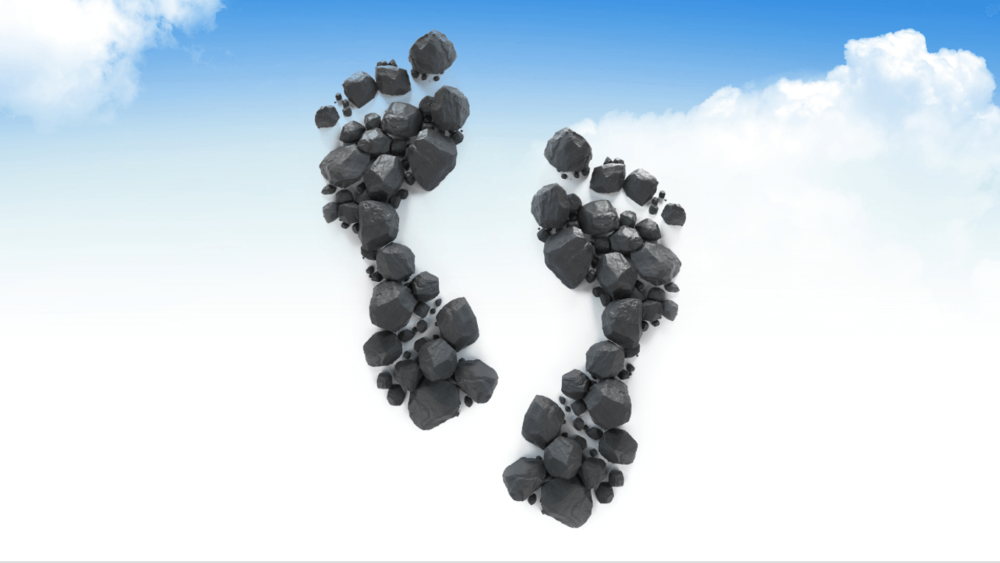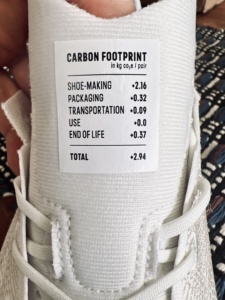We have firm ideas about what kind of change is needed in the marketing profession: we want the CO2 emission of a campaign to be as important in the decision making as the budget or the effectiveness. Why? We talked about this with our founder and CEO György Huszics.
Carbon.Crane: Why are companies not reducing their carbon footprint and what can be done about it? This question was posed to you in a recent interview with the international media community of MediaSpace. Although the journalist worded it more politely and referred to the challenges, you were essentially talking about the factors working against reduction. But why should we reduce? After all, we can offset, as well, and with that we have already done something for the cause, haven’t we?
We have and we have not – that is the problem. We keep changing the bandage, but we don’t stop the bleeding. Let’s say we plant trees, as many as we can to offset our carbon footprint. But what do we really want: more trees or less carbon? The problem is that planting trees does not in itself produce less carbon, because it does not urge us to emit less, since we can offset it anyway. We need to change our behaviour, and in order to do that we need to change our way of thinking. For example, by first focusing on making the environmental impact of our activities a decision factor.
The first pioneers are already here. The headline of Patagonia’s ‘Black Friday’ ad last year encouraged people not to buy their jacket pictured. Then the ad went on to explain why. They put together a concept of customer behaviour optimised for carbon reduction: buy it if you really need it; get it repaired if it can be repaired, no need to buy a new one immediately; if you’re bored of it but it’s still usable, they’ll help you sell it; and finally, if it’s no longer wearable, they’ll arrange for its selective disposal.
Patagonia’s ad in The New York Times (Source: Patagonia)
We at Carbon.Crane have a different focus, though the goal is the same. They use marketing to share their vision inviting people to join them. We want marketing to take care of its carbon footprint. For instance, we could help Patagonia further reduce the carbon footprint of their website, although it is commendable that they are using green hosting.
Carbon.Crane: Carbon.Crane focuses specifically on the carbon footprint of marketing. How should we imagine this change of mindset in this area?
It’s deliberate that we focus on a single area of expertise as a first step. We come from the data-driven marketing field, which works with individual-level preferences; by definition, we don’t believe in one-size-fits-all solutions. According to our belief, the best way to address specificities is by fields of expertise, especially when we are familiar with the specificities in question, which is why we solely focus on reducing the carbon footprint of marketing or marketing communications.
For example, marketing mindset is fundamentally driven by a cost-effectiveness approach. To make a difference, we need to incorporate carbon reduction considerations into this thinking. The way we put it is that we want to get to the point where the CO2 emission of a campaign is just as important for professionals as its core values like cost or efficiency, in other words, where the carbon footprint essentially becomes a decision factor. In order to promote this, we have created, for example, a Carbon Rate for emails, which shows the reduction potential whilst maintaining or improving efficiency.
It would be nice to get to the point where the cost per access or click is displayed alongside the metrics of carbon emission per access, open and click.
adidas Adizero x Allbirds (Source: Paul Hunter in courtesy of Adidas)
As I have seen it, this demand is not unique. Although it did not come to me as an advertisement, I came across a photo of a shoe in several places, showing the CO2e emissions of each phase of the product life cycle in a format akin to a label showing product ingredients. Interestingly enough the carbon footprint of marketing is not listed…
Carbon.Crane: How is marketing’s carbon footprint different or unique and what are the biggest challenges of reducing it?
The two are closely related and give a good sense of uniqueness. Based on conversations with advertisers, as well as previous studies in this field, we see four challenges.
The first is that marketing does not know the exact size of its own carbon footprint. To understand this, it is important to know that the carbon footprint of marketing activity falls into the so-called Scope 3 category, together with other 3rd party services used by a company. This is typically estimated using indirect information (e.g. budget size, number of impressions) and what is really important, it is estimated once a year, retrospectively. In addition, we are mostly talking about aggregated data, which makes it almost impossible to get a picture of separate campaigns or channels let alone tools. Therefore, it’s really hard to do anything with it other than offsetting.
The second challenge is that even if the data is known and a proper breakdown is available, most of the marketing experts don’t know what other choices they have beside offsetting. It’s not necessarily clear to them that something can be done about the emissions itself, as well.
The third difficulty is that when it comes to reduction, it is not always clear what options are available, where to start, what specifically could be cut back.
And here comes the fourth, the fear of how the reduction will not destroy the effectiveness of the campaigns, since those are still the main KPIs of success.
Thanks to our marketing background, we see another factor, which should be seen as a factor rather than a challenge. We must accept that there will always be certain emissions as an output of marketing that we will not be able to reduce. For example, if we don’t send out an email, they won’t be able to open it, and I can’t think of many campaigns where that is not one of the main objectives.
Our answer to this is that we measure not one but two carbon footprints in case of emails: one for those that are not opened and the other for those that are opened. The former should be reduced, the latter replaced. Perhaps this example best shows that reduction and replacement are not alternatives but complementary to one another. They just have to be kept in the correct order.
Carbon.Crane. That doesn’t seem to be easy. What is the solution?
Taking into considerations all the challenges listed, a picture emerges of a solution that works with rather measured than estimated data, points in the direction of reduction, provides specific help, as well as tips on the execution and, perhaps most importantly, does not compromise campaign effectiveness, but rather improves it.
Carbon.Crane. This is quite a complex set of expectations. How can this be achieved?
Firstly, we have put together a general and customizable concept for carbon reduction for websites and email campaigns, which starts with measurement, helps with optimisation, and then measures the results. The most central part of the model is the Carbon Monitor, which continuously shows the carbon footprint of websites and email campaigns calculating with the number of visitors or emails sent, compares the results with expectations and tells you if there is a discrepancy. It operates as a fully automated solution that, when integrated with analytics systems, can show real-time data. In addition, we provide support for optimisation, either as advisory or by actively managing or implementing the processes.










Comments are closed.